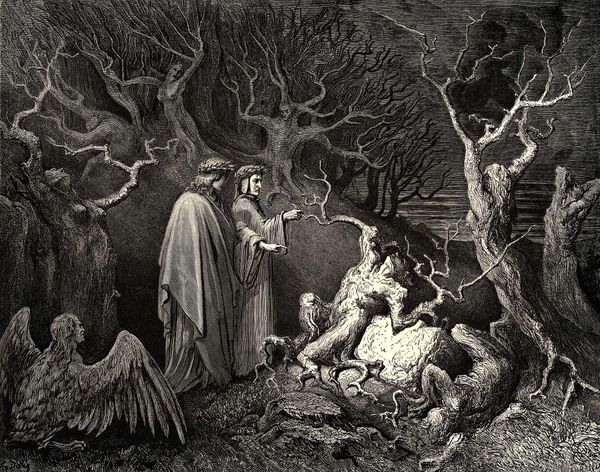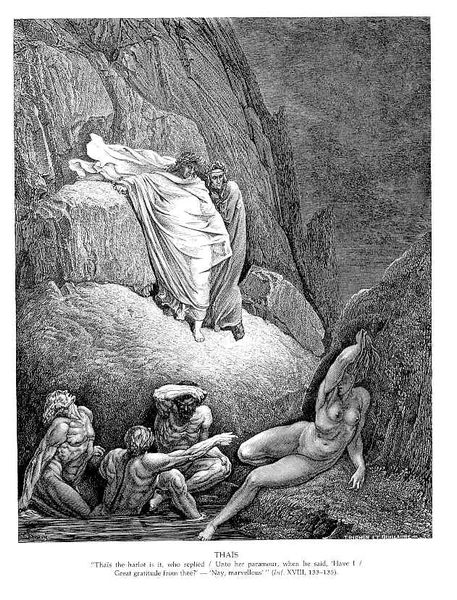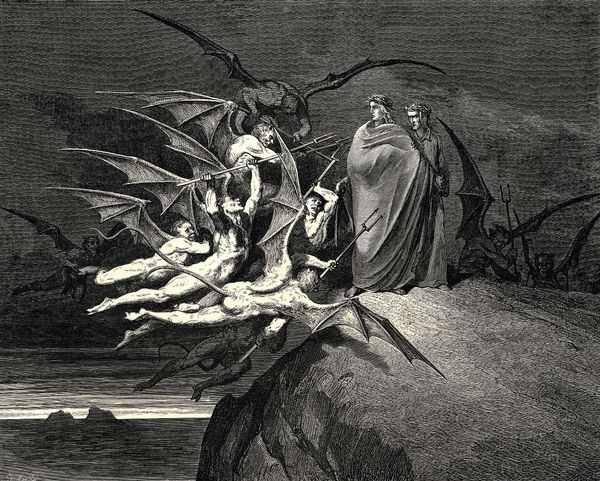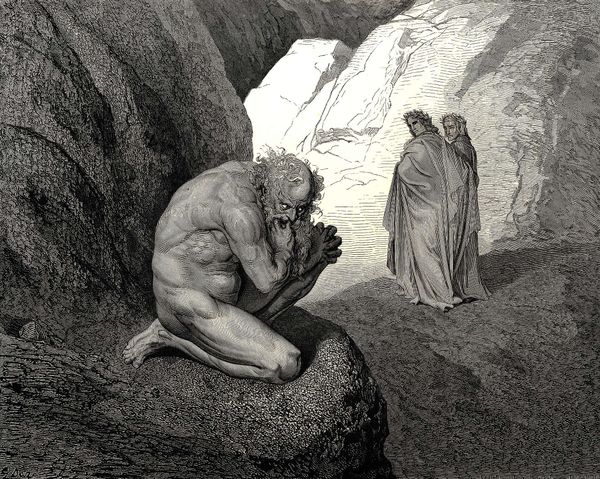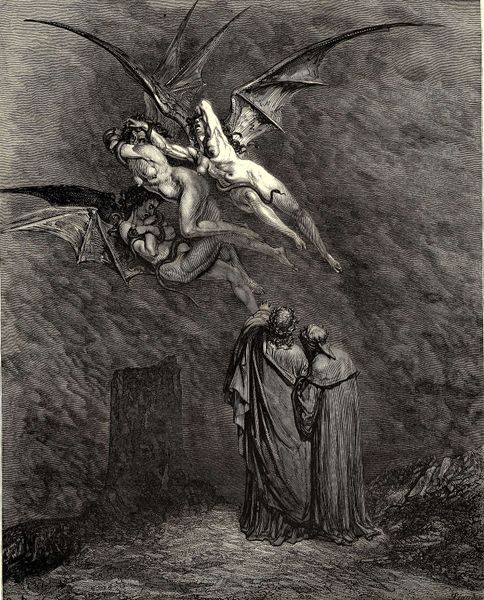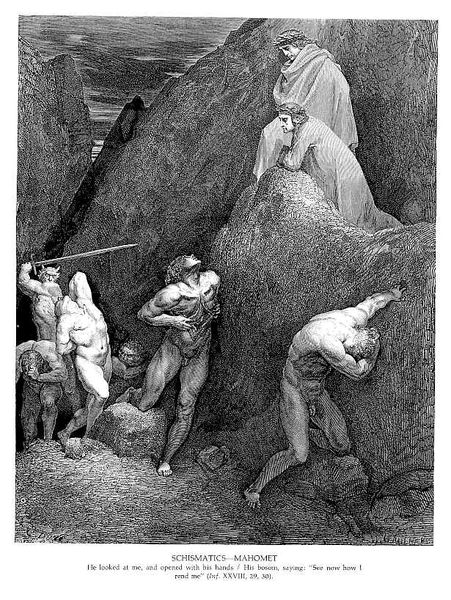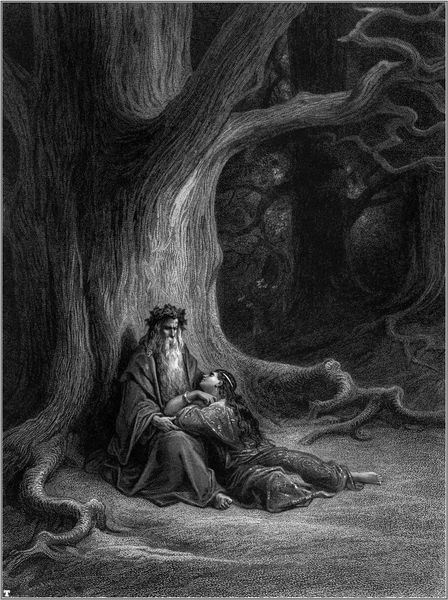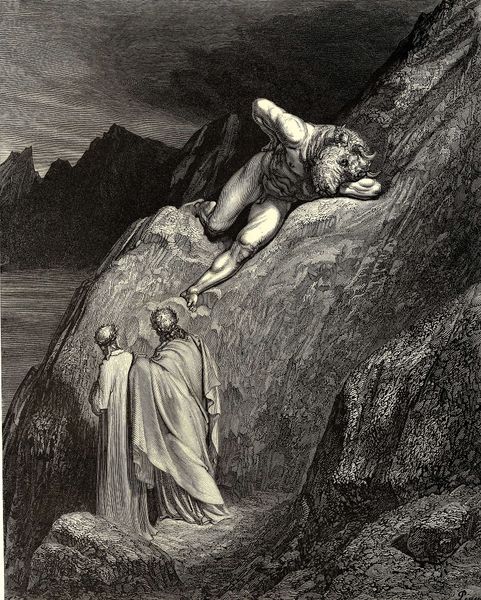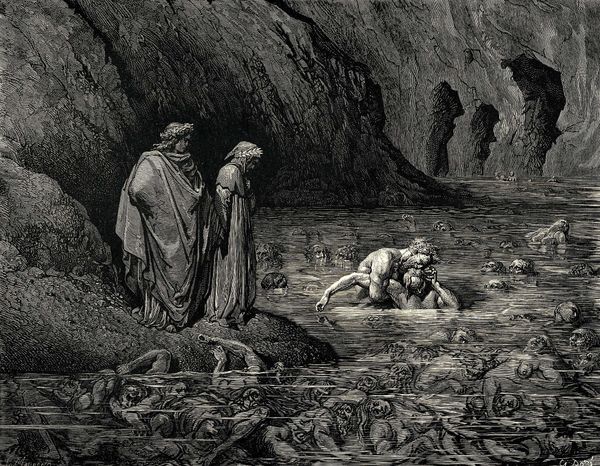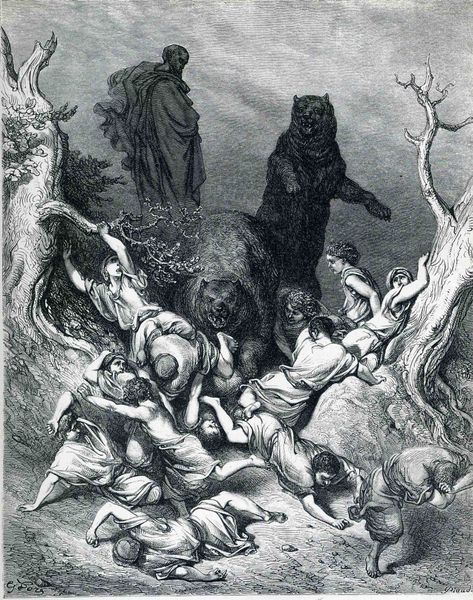
drawing, graphite, engraving
#
drawing
#
narrative-art
#
sculpture
#
landscape
#
charcoal drawing
#
figuration
#
charcoal art
#
romanticism
#
line
#
graphite
#
history-painting
#
charcoal
#
engraving
Copyright: Public domain
Gustave Doré created this engraving, "The Inferno, Canto 30," as part of his illustrations for Dante Alighieri's epic poem, "The Divine Comedy," amidst the burgeoning industrial era of the 19th century. Doré masterfully captures a scene steeped in suffering, highlighting the themes of punishment and moral corruption present in Dante’s Inferno. The figure in the foreground is a study in abjection, a figure of complete despair. Doré's dramatic style—evident in the stark contrast between light and shadow—heightens the emotional impact, inviting viewers to reflect on their own moral compass and societal values. His illustrations often served as social commentary, reflecting anxieties about modernity, class divisions, and the darker aspects of human nature. Doré evokes a strong sense of empathy for the suffering souls, compelling us to consider the consequences of our actions and the societal structures that perpetuate inequality. It is a reminder that we should strive for a more just world, even in the face of overwhelming despair.
Comments
No comments
Be the first to comment and join the conversation on the ultimate creative platform.
